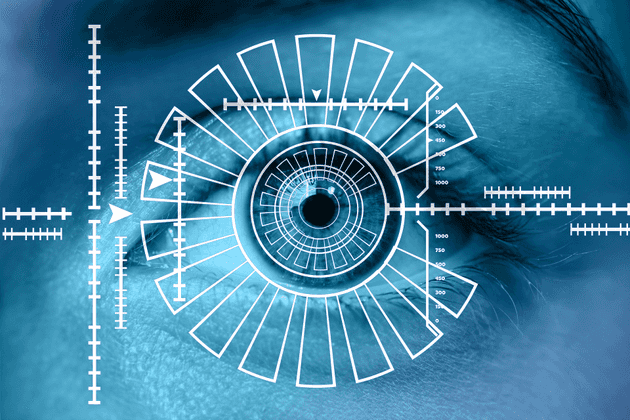What is Behavioral biometrics
Behavioral biometrics is a form of biometric authentication that analyzes patterns in human behavior, such as the way a person types, swipes, or interacts with their device. It is a relatively new field of biometric technology that is gaining popularity due to its ability to enhance security and reduce the risk of fraud.
Unlike traditional biometric authentication methods that rely on physical traits like fingerprints or facial recognition, behavioral biometrics looks at unique behavioral patterns that are specific to an individual. These patterns can include things like typing speed, typing rhythm, mouse movements, and the way a person holds their device.
Behavioral biometrics uses machine learning algorithms to analyze these patterns and create a unique biometric profile for each user. This profile is then used to verify the user's identity and detect anomalies in their behavior.
One of the key advantages of behavioral biometrics is its ability to provide continuous authentication throughout a user's session. Unlike traditional authentication methods like passwords or PINs, which are only verified at the beginning of a session, behavioral biometrics can continuously monitor the user's behavior to ensure they remain authenticated.
Behavioral biometrics can also provide dynamic risk scoring, which assesses the risk level of a transaction in real-time based on user behavior patterns. This means that if a user exhibits suspicious behavior, the system can immediately adjust the risk score and trigger additional authentication measures.
Behavioral biometrics can help prevent fraudulent activities by analyzing user behavior and detecting anomalies in real-time. For example, if a user suddenly starts typing with a different style, behavioral biometrics can flag it as a potential fraud attempt and prompt additional authentication.
Overall, behavioral biometrics is a promising technology that can enhance security and improve the user experience for a wide range of applications, including online banking, e-commerce, and enterprise authentication.
Reasons why banks need Behavioral Biometrics
Preventing Fraudulent Activities
With the increasing number of online transactions, banks are becoming more vulnerable to fraud. Behavioral biometrics can help prevent fraudulent activities by analyzing user behavior and detecting anomalies in real-time. For example, if a user suddenly starts typing with a different style, behavioral biometrics can flag it as a potential fraud attempt and prompt additional authentication.
Reducing False Positives
Traditional methods of authentication, such as passwords and PINs, are prone to false positives. This means that legitimate users may be denied access, while fraudsters can easily bypass the security measures. Behavioral biometrics, on the other hand, can reduce false positives by analyzing patterns in user behavior and providing a more accurate authentication system.
Improving User Experience
Behavioral biometrics can also improve the user experience by eliminating the need for traditional authentication methods such as passwords and PINs. This can reduce the frustration of users having to remember complex passwords and typing them in every time they want to access their accounts.
Enhanced Security
Behavioral biometrics can provide enhanced security by continuously monitoring user behavior and detecting anomalies in real-time. This can help prevent fraud attempts before they occur, reducing the risk of financial losses and reputational damage.
Compliance with Regulations
Many regulatory bodies, such as PSD2 and GDPR, require banks and financial institutions to implement strong authentication methods to protect customer data. Behavioral biometrics can help banks comply with these regulations by providing an additional layer of security.
Dynamic Risk Scoring
Behavioral biometrics can provide dynamic risk scoring, which assesses the risk level of a transaction in real-time based on user behavior patterns. This means that if a user exhibits suspicious behavior, the system can immediately adjust the risk score and trigger additional authentication measures.
Continuous Authentication
Behavioral biometrics can also provide continuous authentication, which verifies the identity of a user throughout their entire session. This means that if a fraudster attempts to take over an active session, the system can detect the anomaly and prompt additional authentication measures.
Detection of New Fraud Techniques
Behavioral biometrics can also detect new fraud techniques that traditional authentication methods may miss. For example, fraudsters may use automated bots to mimic user behavior, but behavioral biometrics can detect the subtle differences in behavior and flag it as a potential fraud attempt.
Ease of Use
Behavioral biometrics is also easy to use for customers. Unlike traditional authentication methods, which can be cumbersome and frustrating for users, behavioral biometrics requires no additional effort from the user. The system simply analyzes their behavior in the background, providing a seamless and frictionless authentication experience.
Cost-Effective
Behavioral biometrics can also be cost-effective for banks. With traditional authentication methods, banks must invest in expensive hardware or software solutions. Behavioral biometrics, on the other hand, can be integrated into existing systems with minimal hardware or software requirements.
Conclusion
Behavioral biometrics can provide several benefits for banks and financial institutions, including enhanced security, dynamic risk scoring, continuous authentication, and the detection of new fraud techniques. Additionally, it is easy to use for customers and can be cost-effective for banks to implement.
